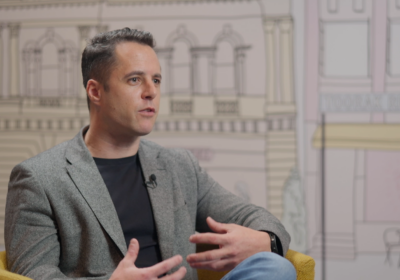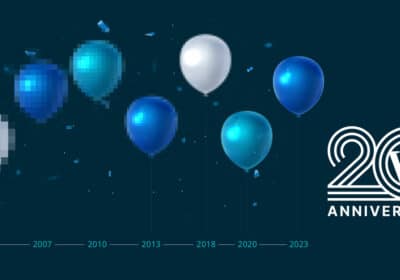Marketers have always been early adopters of technology, but never before have their roles been so deeply intertwined with the software development community.
That intersection between marketing and tech isn’t always a comfortable place to work, but it’s certainly an interesting one, and it’s a role the team at DarwinApps has embraced. The high-end software engineering agency focuses exclusively on supporting enterprise and emerging marketing teams, creating custom marketing tools for brands like Audi, Seagate and Namely.
To find out more about what brand marketers can learn from developers these days, we spoke with Vlad Lokshin and Sergey Kisly, co-founders of DarwinApps. Here’s what they had to say.
What are the biggest trends you see right now at the intersection of marketing and software development?
Vlad: So it’s part reality and part buzzword, but the biggest trends that we’ve noticed so far have been in analytics, bots, and interconnectivity. We’ve had analytics tools for a long time, but they’ve become so much richer and more complex than before. We’re getting better at delivering reliable attribution. What have you spent on marketing, and what do you have to show for it? Over all the years, nobody has really been able to come up with a clear answer, but analytics are getting us closer and closer. Then there’s the rise in bots and automation. Bots are a completely new messaging and marketing interface, and they’ve been picking up a lot of speed.
Sergey: On top of all this, there’s how all of these tools connect with each other. It’s so much easier to string together multiple solutions for marketers, even compared with just a few years ago. The friendly interactivity of all those tools has helped marketers really show their stakeholders where the marketing dollars are going. And, of course, we have to talk about the impact of machine learning.

Machine learning is predictability. So if you think about why marketers really use analytics, it’s to say that we spend a certain amount on this kind of customer target, and these were our results. Well, imagine being able to do that over and over again without actually spending those dollars. We can predict the results. Those are the kinds of things that machine learning is opening up for marketers.
What role does open source play in these trends?
Sergey: It’s huge. Open source means that something is built, and you don’t have to build it again, and it doesn’t cost you anything. If you think about it from a development perspective, and how a marketing team should look at it as well, the most expensive thing you can do is build custom. Then the second most expensive approach is software-as-a-service.
So somebody is investing cost and time into building and maintaining something, and now I’m going to pay them regularly for it. And then there’s open source. Not only is it usually free, but with open source, the developers tend to be more motivated to prove a service and offer efficiency to the end user, rather than focusing just on profits.
What can marketers learn from this open source mindset? Not just in how they work with a developer, but in how they work as marketers?
Vlad: With open source in general, many people are contributing to solving one problem without personal benefit to themselves. Marketers can also think about their work that way. If you really think about it, a lot of content marketing is open source marketing because it’s somebody taking something that they’ve learned and sharing it with the rest of the community.

Sergey: Through open source, we can do this with marketing tech, as well. The goal should be to save everyone the time spent doing all of these things manually, so we can focus more on the richer parts of marketing, on the really human side of marketing.
The idea of agile marketing is really hot right now, and that came from the development world originally. How is agile translating to marketing?
Vlad: As its core, agile says let’s build things frequently in short sprints. That applies to marketing as well as development. But we can take it a bit further, using a popular metaphor from development and design, called skateboarding, which was coined by Henrik Kniberg of Spotify.
People think that you build software like cars: First, you build the wheel, and then the chassis, and then the car. And then you assemble everything together, and hope that it works. (Which it rarely does.) Instead, we should build products like this: First a skateboard, and then a scooter, and then a bicycle, and then a motorcycle, and then finally a car.

Sergey: And we love, love, love that metaphor because it says so much more than just “do less.” It’s do less, but while still getting your customer from point A to point B. So in development, it’s about the minimal thing that we can build to get our customers from point A to point B, and how we can learn from that to determine the next steps.
And in marketing, it’s the exact same thing. Instead of building out complex landing pages upfront, for example, try testing the concept on Facebook Canvas. If it works, then you can invest in building out that full desktop experience.
Vlad: And this is something that marketers can learn from the best developers and the best designers: Do less. Don’t fight to add features. Plan to do more with less because you understand the cost and complexity that goes with building something new, and adding something.
Any kind of new platform that you add, there are now not just two things to maintain, but two things to update, and two things to think about. That requires time. And brain cycles. So think long and hard about how you can intentionally do more with less. You’ll reap the benefits across the whole process, down to improved customer satisfaction.





Join the conversation